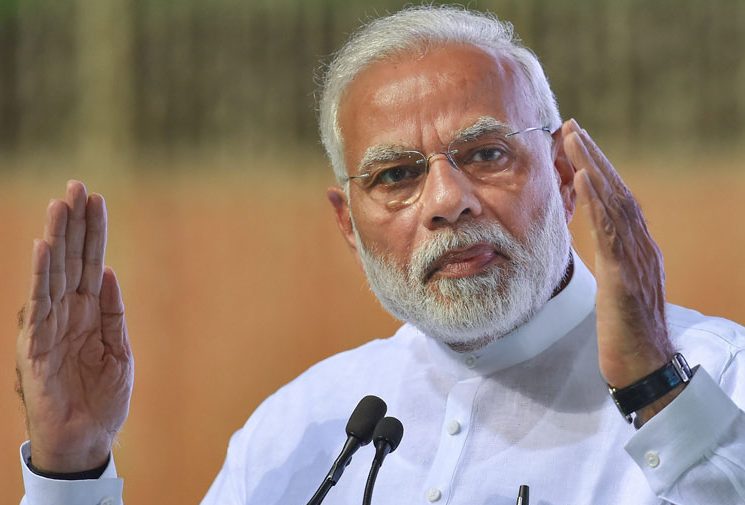
21 days; 7 states; 25 visits: PM’s domestic sojourn on poll eve

Days: 21
States: Arunachal, Bihar, Uttar Pradesh, Jharkhand, Maharashtra, Delhi and Tamil Nadu
Visits: About two dozen
Mode: Criss-cross, air, train and road.
Attire: Local
As soon as Prime Minister Narendra Modi assumed power in 2014, he set off on a whirlwind tour of the world. He covered 50 countries in 41 trips costing the exchequer ₹355 crore. As years rolled by, his world tours have decreased, but the domestic ones have gone up. According to a reply in Rajya Sabha, in his near 5-year-term, he has spent ₹2,000 crore plus flying around the globe in his special aircraft spending almost more than half-a-year outside the country.
The travel arrangements of the prime minister are complex as they involve setting up communication lines, ensuring fool-proof security and booking venues, fixing relevant appointments, co-ordinating with various security and official agencies among other things.
But that is the easy part to understand as RTI queries have revealed the cost of some of these activities over the years. What is difficult, however, is to get a grip of his domestic tours. There is no clear estimate of his sojourn within India as SPG or the Special Protection Group that protects him round-the-clock does not reveal the information as it is excluded from the purview of RTI.
The spending on foreign tours, it’s argued, is more than compensated by the foreign direct investments India obtains from these countries over the years. Besides the valuable rubbing of shoulders or rather engaging in “tight Modi hugs” with the global high and mighty the trips are said to have resulted in intangible benefits for India’s “now aggressive and assertive” foreign policy.
It’s Modi’s domestic visits that is problematic for the Opposition parties. The aggressive “18-hour-work schedule” claimed by Modi supporters has left them bewildered. Especially in an election season where there is very little to distinguish between his public visits as Prime Minister and private ones as party leader.
Modi seems to be determined to use the time even more vigorously just before the announcement of the 2019 Parliamentary schedule. The Federal therefore decided to study his visits over a 3-week period starting February 9 ending March 1. The outcomes are revealing.
In this avatar he is like modern-day Santa Claus distributing goodies and cheering the masses. As the Prime Minister the headlines typically scream saying “he inaugurated a slew of development projects”. This ranged from the laying of a foundation stone for a greenfield airport in Itanagar on February 9, through sharing a joke with school children at Akshya Patra’s 3rd billionth meal in Vrindavan on February 11th to opening a National Cancer Institute in Haryana.
But then there are huge figures that follow. A ₹20,000 crore plan for Jhansi, a Rs 4500 crore plan for Arunachal, a ₹33,000 crore package for Barauni in Bihar. The states visited are crucial— Bihar, Uttar Pradesh and Maharashtra. On March 1, he travelled extreme south to Kanyakumari in Tamil Nadu.
While criss-crossing the nation and unveiling his development plans, Modi has also been actively promoting his pet PM Kisan card schemes, health schemes, among other things. He has spent a lot of his time talking about the development work he has brought to their door steps. The high voltage, high intensity speeches also involve distributing cash certificates and assuring in not-so-subtle terms of more such goodies following if he was returned to power in 2019.
Some of this messaging which goes beyond governance and into the realm of politics is what is problematic for the Opposition. Once the official programmes are over, the Prime Minister would, in his public address, indulge in a no-holds-barred attack on the Opposition. The broadside would be on the Congress party, its first family, the conspiratorial coming together of Opposition parties, the rise of anti-national tendencies etc.
Also, not so couched in these speeches are clear messaging for his own cadres. On February 17, speaking in Barauni in Bihar, Modi said, “I feel the same fire in my heart that’s burning inside you,” referring to the grief shared by the people across the country over Pulwama attacks.
While the Opposition cried of politicisation of terror deaths, there was little to assuage those whose nerves were frayed by hyper-nationalist programming coming out of private television studios. But it may not be easy to readily accuse Modi of politicising every available opportunity either for electoral gains of kicking up nationalistic fervour as a Prime Minister. In Tamil Nadu the authorities actually took care to erect two stages next to each another — in one he performed his official duties as the Prime Minister and quickly hopped on to the next to speak in his changed avatar as a politician!

